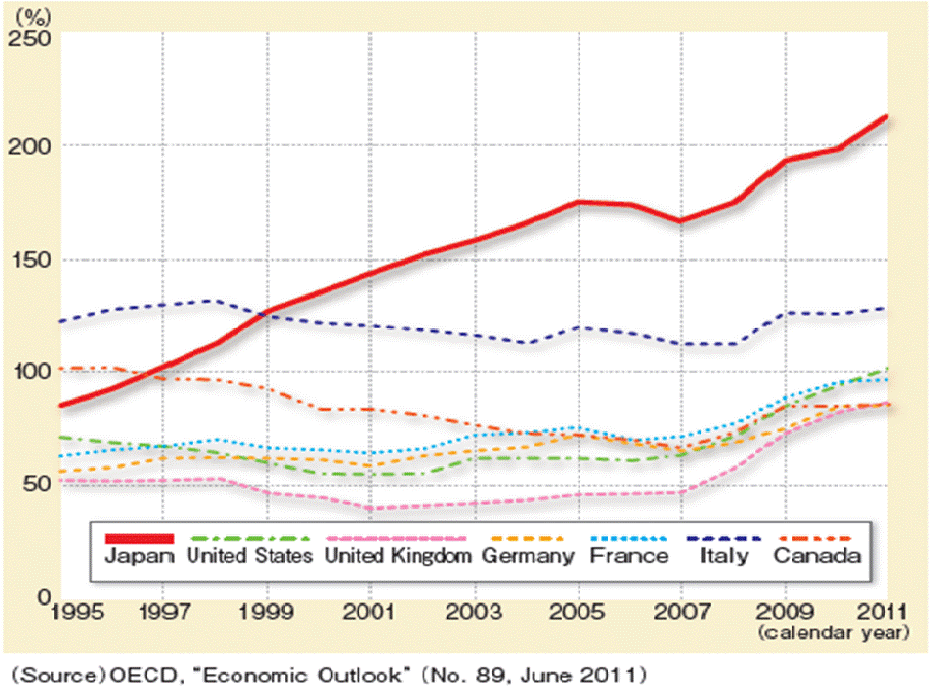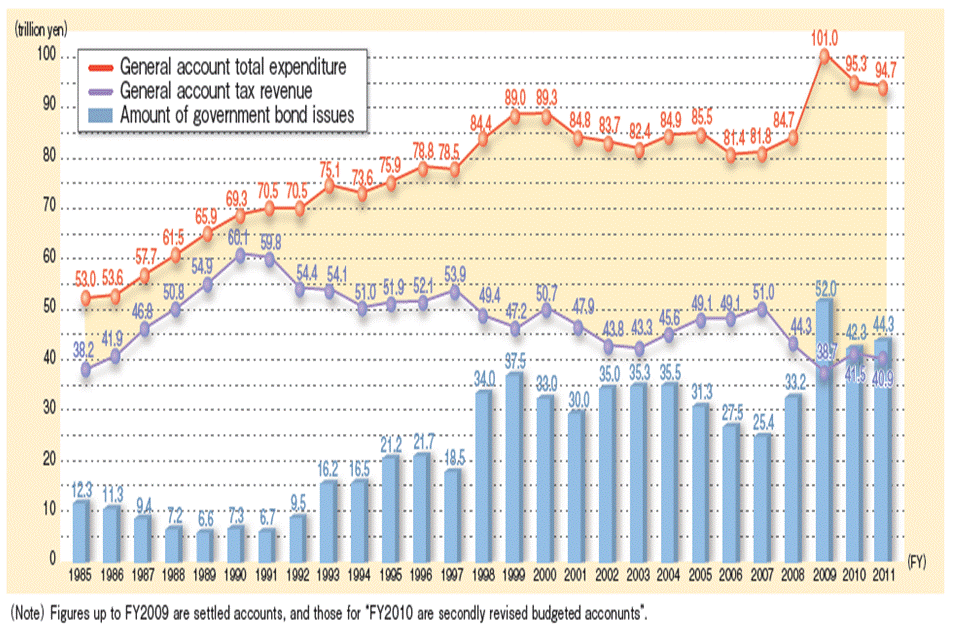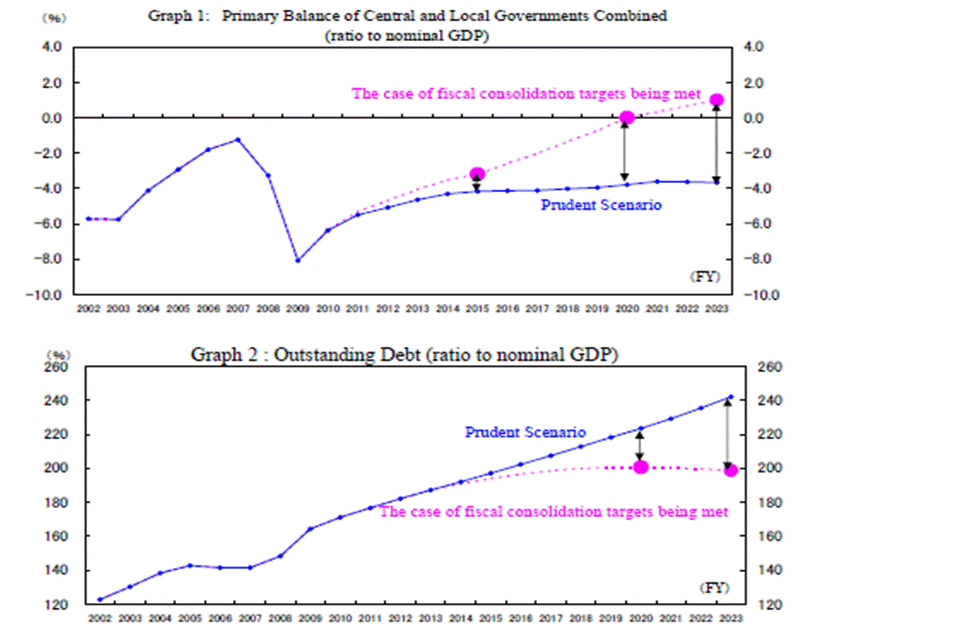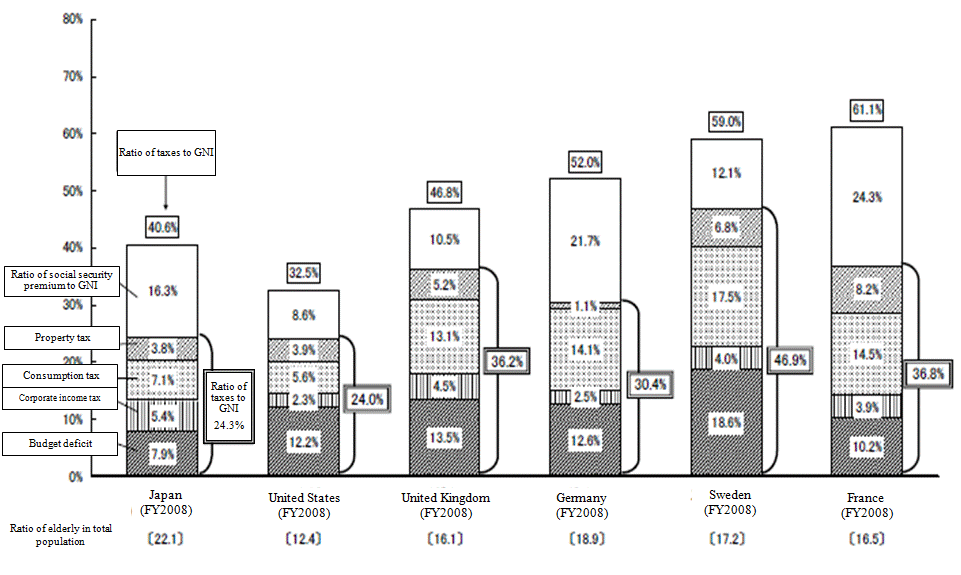On January 6 this year, Prime Minister Yoshihiko Noda's government formally adopted a draft plan for integrated reform of the social security and tax systems. Although attention has focused almost exclusively on the proposed increase in the consumption tax, the plan goes far beyond that, offering a roadmap for a total overhaul that also covers taxes on income and property.
But is the Noda plan the tax reform Japan needs? In the following I attempt to answer that question by outlining the basic objectives and tools of tax reform and explaining how they apply to Japan today.
Objectives of Tax Reform
Tax reform is approached from two basic standpoints. One focuses on the size of government (how revenues are secured), while the other focuses on structural changes to the economy and society (how needs are met). These two perspectives correspond to the twin functions of tax policy: on the one hand, raising revenues to fund government services; on the other hand, building an equitable society and a stable, vital economy through income redistribution, stimulus measures, and so forth.
1. Balancing burden s and benefits. The issue of paying for government inevitably involves questions regarding the size of government and the content of public services (expenditures). Fundamentally, however, the benefits and burdens of taxation must be brought into balance.
For Japan, which has a higher ratio of debt to gross domestic product than any other developed country, restoring this balance is critically important, not merely to put government finances on a sound footing but also to prevent future generations from being unfairly burdened by the cost of the benefits we enjoy.
Figure 1. International Comparison of General Government Gross Debt (Ratio to GDP)

There are two basic ways to restore balance: increase the burden by raising taxes, or decrease spending by making government smaller. Ultimately, the people of a nation must decide which they prefer. Some individuals prize the guarantee of stability and security, even at the price of higher taxes, while others feel that responsibility should be shifted as much as possible to the individual.
In Japan, judging from opinion polls, the majority of people want to maintain the current level of social benefits provided by the government, including pensions, healthcare, nursing care, and child allowance. In other words, if the choice is between capping burdens and maintaining benefits, they prefer to redress the imbalance by increasing the national burden.
In the process, however, the government has the responsibility to provide these benefits as efficiently as possible so as to hold tax increases to a minimum.
2. Responding to structural change. The other purpose of tax reform is to ensure social equity and economic vitality. Unlike tax reforms designed to balance the budget, reforms aimed at adapting to structural change should, in principle, be revenue-neutral—that is, they should neither increase nor decrease the tax burden.
To design reforms for this purpose, we must first agree on the structural social and economic problems confronting us and then consider how the tax system can help mitigate them. In Japan's case, the two basic problems are widening economic disparities, leading to a surge in poverty, and a loss of economic vitality.
Voters will not be persuaded of the necessity of tax reform unless it can be clearly demonstrated that it addresses the above functions.
Dealing with the Deficit
Japan's general account budget for fiscal year 2012 is approximately 90 trillion yen, of which approximately half—44 trillion yen—is financed by government bonds. This in itself indicates a massive imbalance between burdens and benefits. With one-fourth of government outlays going to service this public debt, a vicious circle has been created in which more and more must be borrowed simply to pay what is already owed.
Figure 2. Trends in the General Account Tax Revenue, Total Expenditure, and Amount of Government Bond Issues

In 2010 the Japanese government made a public commitment to reduce the primary deficit for national and local government combined by one-half by the middle of this decade, and to achieve a primary surplus by the beginning of the next (Fiscal Management Strategy, Cabinet Decision, June 22, 2010).
Figure 3. Relationship between the “Prudent” Scenario and Targets

The primary deficit (or surplus) is the difference between expenditures excluding interest payments on public debt, and revenues excluding funds borrowed via government securities. When the budget achieves "primary balance" in any given year, it means that tax revenues equal program spending. If primary balance is maintained, then the ratio of government debt to GDP will not increase as long as the nominal interest rate and the rate of economic growth are the same.
For this reason, primary balance is regarded as an important milestone in rebuilding government finances. But to eliminate the specter of default, it is not enough to achieve primary balance; we must go further and reduce the level of public debt as a ratio of GDP.
The draft plan adopted on January 6 proposes to boost tax revenues by means of a two-stage increase in the consumption tax, which would be pushed up to 10 percent by 2015. However, on January 14 the government released revised estimates reflecting changes in the economic situation. According to this report, eliminating the primary deficit by fiscal year 2020 will require a further increase in the consumption tax to 16 percent in 2020. (This is a "prudent" estimate, assuming economic growth averaging 1.1 percent in real terms, 1.5 percent in nominal terms.)
Japan's looming fiscal crisis is a legacy of the 1990s. Tax revenues, already eroding as a result of the long post-bubble recession, were further reduced by income and corporate tax cuts intended to stimulate the economy (two special tax cuts in fiscal 1998 and another in fiscal 1999). At the same time, expenditures ballooned, partly as a result of new public works projects adopted as stimulus measures and partly owing to increases in social security spending attending the aging of the population. The budget plunged ever deeper into the red, but our leaders postponed the action needed to correct the situation. Now the situation has become urgent.
Addressing the Wealth Gap, Poverty, and Stagnation
How should the tax system be reformed to respond to structural economic and social change?
After the end of the Cold War, economic power began shifting toward the BRIC economies (Brazil, Russia, India, and China) and the emerging markets of Eastern Europe, while economic integration in the European Union facilitated the free flow of goods, people, and funds around the region. Almost overnight, people and businesses around the world found themselves forced to complete in a global economy. To respond to these developments and their impact, governments in the developed world have made two basic adjustments to their tax policies.
As businesses in the developed world found themselves in competition with lower-priced products from the BRICs and other developing economies, they responded by cutting wages and benefits and turning increasingly to part-time or temporary workers to reduce labor costs. As a result, poverty levels rose, and income disparities widened.
Governments soon recognized the necessity of bolstering income redistribution measures. Traditionally, they had done this by strengthening the progressive rate structure of income taxes, raising taxes on the wealthy. But in a global economy, higher taxes on the wealthy simply caused wealth to flow overseas, resulting in further loss of revenue.
Many developed nations thus began integrating their tax and social security policies. In an effort to maintain an incentive to work among low-income earners, they shifted the emphasis from traditional welfare benefits to a combination of job training and refundable tax credits designed to ensure a minimum income. This was the "earned income tax credit," most famously implemented under US President Bill Clinton and British Prime Minister Tony Blair.
Meanwhile, global tax competition was intensifying, as governments jockeyed for jobs and economic growth by pushing corporate and income taxes lower in an effort to attract businesses and capital. In developed countries with relatively high tax rates, governments were forced to lower corporate taxes to prevent businesses from moving their factories offshore and sending jobs overseas. Between 2000 and 2009, corporate taxes in the OECD countries fell by 8 percentage points on average, from 34 percent to 26 percent. Maximum income-tax rates, meanwhile, fell 5 points between 2000 and 2009, from 40 percent to 35 percent.
What emerged from this trend was the "paradox of corporate taxes": the lower the rate, the greater the revenue. One major reason was that the cuts were combined with a wider tax base by eliminating tax breaks of various sorts. Japan, too, needs to reform corporate taxes by lowering tax rates and expanding the tax base.
Tax Mix
In the foregoing, we have examined the various challenges that any major change in Japan's tax code must address. But any tax reform effort must also pay heed to the balance between income, consumption, and property tax, each of which has advantages and pitfalls.
Figure 4. International Comparison of Breakdown of Ratio of Taxes to Gross National Income

The advantage of income tax is that it facilitates vertical equity by requiring those with higher incomes to shoulder a greater tax burden. But a highly progressive rate structure can also sap high earners' motivation to work or expand their business activities. Moreover, chronic underreporting of taxable income in certain professions leads to revenue loss and horizontal inequity (an unequal tax burden among people with the same income). In addition, high taxes on the wealthy can cause their wealth to drain out of the country.
The consumption tax avoids the problem of horizontal equity, as well as the negative effects that can result from taxing savings. But their regressive nature (the lower one's income, the greater their impact) can make them politically unpalatable.
Taxes on property are one way to redistribute wealth to narrow the gap between rich and poor and help ensure equal opportunity, and they have relatively little impact on economic activity. The drawback to property taxes is the difficulty of accurately assessing the value of land and other assets.
Since each type of tax has merits and demerits, it is important to strive for the optimum "tax mix," that is, the best possible balance of income, consumption, and property taxes.
Specific Recommendations
With the foregoing considerations in mind, I would offer the following guidelines for tax reform in Japan.
In alleviating wealth disparities, one can redress either the accumulation of wealth at the top end or the loss of wealth at the bottom. Since the accumulation of wealth contributes to economic vitality, the government's draft plan rightly proposes no more than a symbolic rate increase of 5 percentage points for those earning more than 50 million yen annually (yielding a maximum tax rate of 55 percent when combined with the inhabitant tax).
On the other hand, the loss of wealth at the bottom end demands decisive steps, since it is giving rise to the kind of poverty problem that Japanese society has largely escaped until now. To remedy this situation, the government should seamlessly merge its social and tax policies by means of a refundable tax credit system. Under this system, households or individuals receiving less than a set minimum in annual income receive a tax credit—that is, a deduction from their tax liability (as opposed to a deduction from their taxable income). If their income is so low that their tax liability is smaller than the credit, they receive the difference as a "refund." This system has had great success in Britain and the United States.
The government's draft plan calls for the institution of a refundable tax credit (along with the adoption of a taxpayer identification system) in 2015 as an anti-regressive measure to offset the consumption tax, which would rise to 10 percent that year. It would be better to push for the adoption of a full-scale earned income tax credit, rather than implementing a limited measure simply as an anti-regressive offset for low-income earners.
Meanwhile, to prevent disparities from becoming ever more deeply entrenched, Japan needs to expand the tax base for the inheritance tax. When large disparities in wealth are passed down from generation to generation, the end result is socioeconomic stratification, which can rob a society of its vitality. Under the current system, only 4 percent of all deaths become subject to inheritance tax. Under the draft plan, the base would expand to 6 and then 7 percent. This is a step in the right direction.
This leaves only the issue of corporate taxes. The Diet recently enacted legislation to reduce the effective corporate tax rate by 5 percentage points to 35.6 percent beginning in 2015 (until then, corporations will be paying a surtax to help finance earthquake reconstruction). Even with this cut, however, Japan's effective rate is still more than 5 points higher than levels in other countries. Further reductions are needed to halt Japan’s deindustrialization.
Japanese businesses pay a corporation tax at the national level and an inhabitant tax and enterprise tax at the local level. Under the latest changes, the corporation tax will fall to 25.5 percent in 2015. To further lower the effective corporate tax rate, we need to focus on local taxes. In fiscal 2008, the Diet passed measures aimed at the eventual reform of local corporate taxes, which are also blamed for large fluctuations and disparities in local tax revenues. The law laid the groundwork for a reduction by replacing half of the enterprise tax (equivalent to a 1% consumption tax) with a "special local corporate tax," which was to be replaced down the road by a consumption tax increase. If this change were implemented, the effective corporate tax rate would go down to about 33 percent.
Under the government's January 6 draft plan, however, the replacement of the special local corporate tax is postponed indefinitely on the grounds that the consumption tax increase is intended specifically to fund rising social security costs. Without a reform of local corporate taxes, business will go elsewhere, and Japan will lose those tax revenues altogether. The government must move swiftly on this issue, both to secure the funding needed to support social security in our aging society and to provide the stable revenues local governments need if we are to achieve decentralization.
Going the Distance
The government is facing stiff opposition to an increase in the consumption tax from politicians who protest that it would violate the 2009 election manifesto of the Democratic Party of Japan. But the problem of sovereign risk raised by the debt crises in European countries like Greece and Italy—which show no signs of abating—emerged after the DPJ came into power. Every government has a responsibility to formulate new measures to deal with crisis situations.
The real problem is that the government has not gone nearly far enough in terms of spending cuts. However, the draft plan does promise to reduce the number of Diet seats and cut personnel costs for government employees before increasing the consumption tax.
Adapting to structural change through tax reform inevitably involves shifts and adjustments in the tax burden. For some, the burden is bound to increase. Our political and administrative leaders must work hard to reform their own systems, win the people's trust, and persuade them to take this bitter medicine. The prime minister must have the will and the strength to see this task through to the end.























